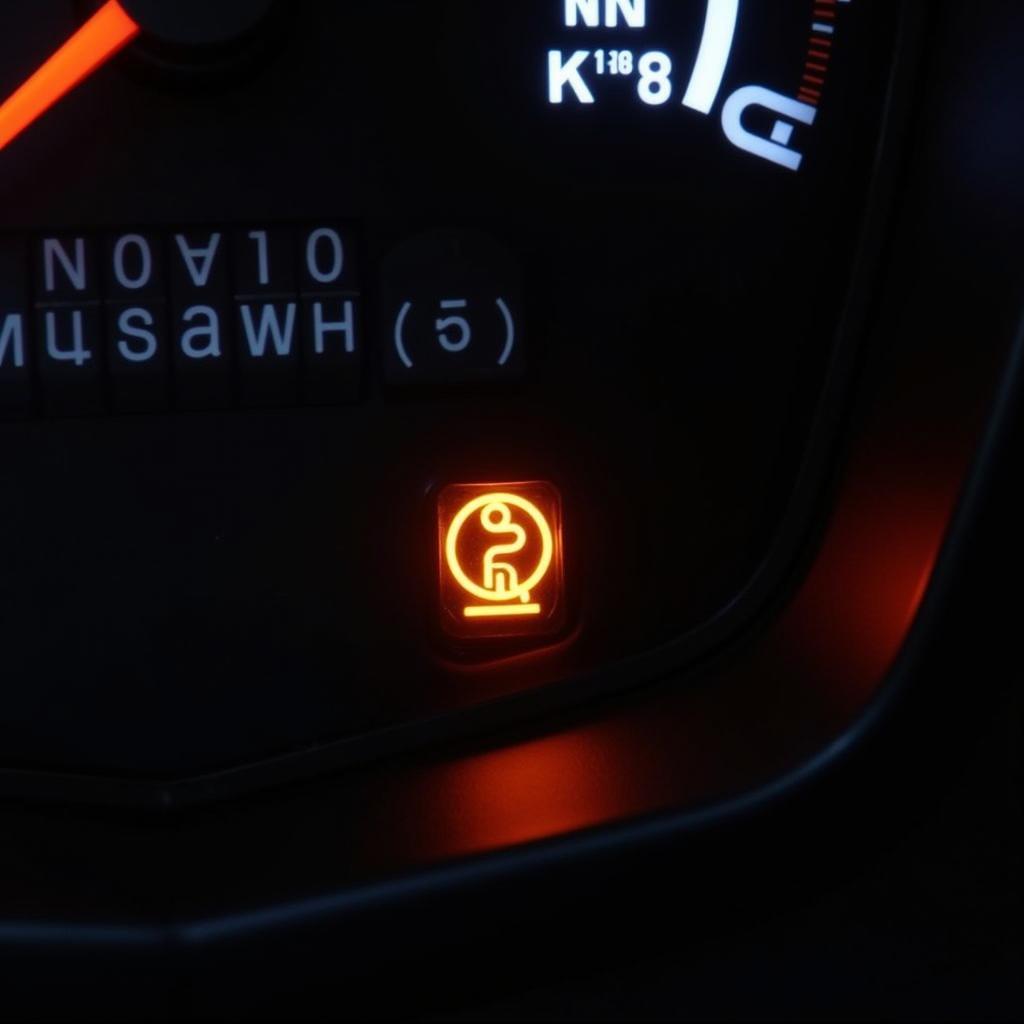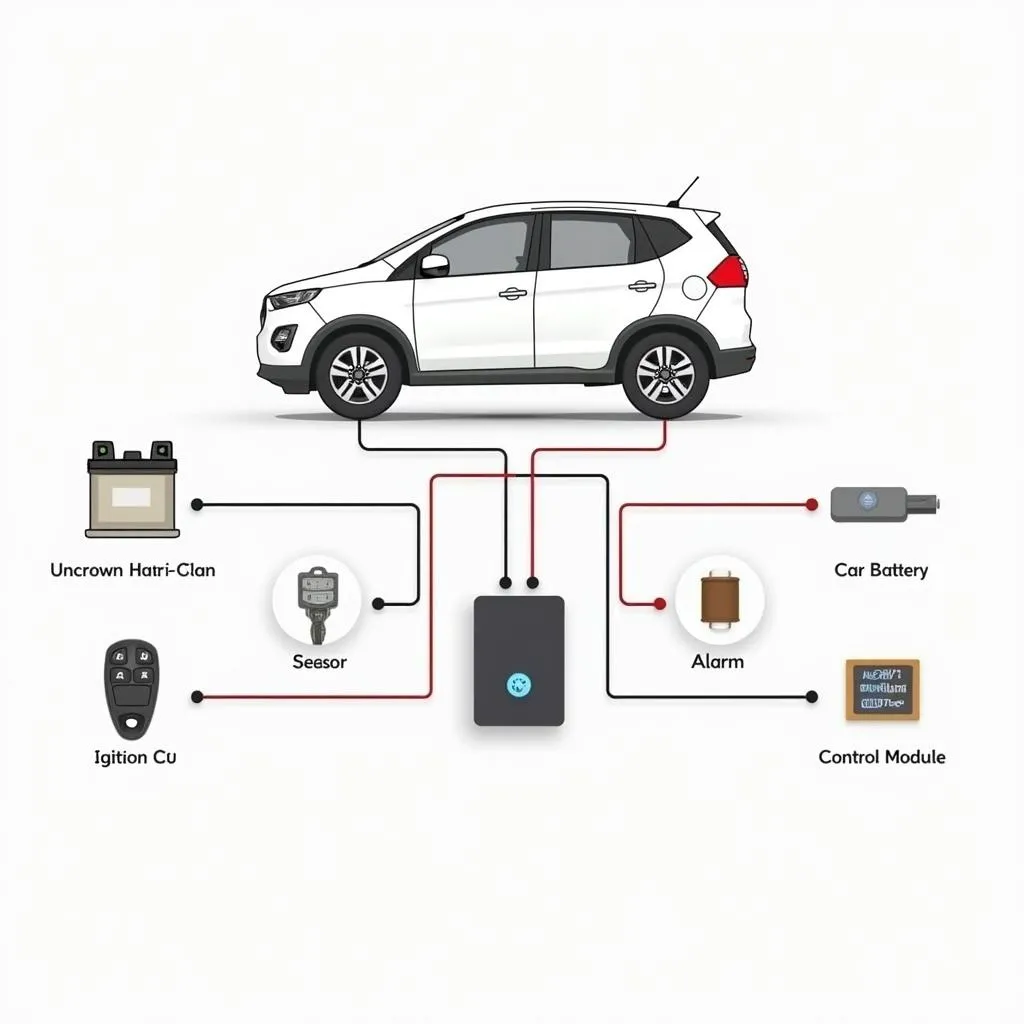The Mini Cooper is a popular car known for its stylish design and fun driving experience. However, like all vehicles, it can encounter issues, and one common problem is the brake pad warning light. This light, often depicted as a red exclamation mark inside a circle, indicates that your brake pads are worn and need attention. This article will delve into the causes of this warning light, possible solutions, and what you should do if you encounter it.
Understanding the Mini Cooper Brake Pad Warning Light
The brake pad warning light is a crucial safety feature in your Mini Cooper. It alerts you to a potentially dangerous situation – worn brake pads. When your brake pads wear down, they lose their effectiveness, which can lead to:
- Reduced braking performance: You may need to press harder on the brake pedal to stop your car.
- Longer braking distances: This increases the risk of accidents, especially in emergencies.
- Damage to other brake components: Worn brake pads can cause damage to your brake rotors, calipers, and other parts.
Causes of the Brake Pad Warning Light
Several factors can trigger the brake pad warning light in your Mini Cooper, including:
- Worn brake pads: This is the most common cause. Your brake pads gradually wear down with use, and the light will illuminate when they reach a certain level of wear.
- Low brake fluid: Brake fluid helps to transfer pressure from the brake pedal to the calipers, which press the brake pads against the rotors. If your brake fluid level is low, it could indicate a leak or a problem with the brake system.
- Faulty brake pad sensor: The brake pad sensor is a small, electrical component that detects when your brake pads are worn. If this sensor malfunctions, it can trigger the warning light even if the pads are still in good condition.
- Loose or faulty brake caliper: A loose or faulty brake caliper can prevent the brake pads from properly engaging with the rotors.
How to Fix the Mini Cooper Brake Pad Warning Light
The best course of action when your Mini Cooper’s brake pad warning light turns on is to take your vehicle to a trusted mechanic as soon as possible. They can diagnose the cause of the problem and recommend the necessary repairs. However, there are some general steps you can take:
1. Check the Brake Pads
If you have some basic mechanical skills, you can check your brake pads yourself. Here’s what you need to do:
- Find the brake pads: Locate your brake pads, typically behind the wheels.
- Inspect the pad thickness: Check the thickness of the brake pads. The minimum thickness varies depending on your Mini Cooper model. Consult your owner’s manual or a reputable online source for the specific requirement.
- Check for signs of wear: Look for signs of uneven wear, grooves, or other damage.
2. Check the Brake Fluid Level
- Locate the brake fluid reservoir: The reservoir is usually located under the hood of your Mini Cooper.
- Check the fluid level: The brake fluid level should be between the “MIN” and “MAX” markings. If it’s below the “MIN” mark, you need to add more fluid.
- Be cautious: Brake fluid is corrosive and can damage paintwork. If you need to add fluid, use the correct type for your vehicle.
3. Inspect the Brake Sensors
The brake pad sensors are located on the brake pads. If you have access to the brake pads, inspect the sensors for any damage or loose connections.
What to Do If You See the Brake Pad Warning Light
Here’s what you should do if the brake pad warning light comes on:
- Don’t panic: While the warning light is serious, it doesn’t mean your brakes have completely failed. You can still safely drive your car to a mechanic.
- Drive cautiously: Avoid sudden braking and maintain a safe distance from other vehicles.
- Schedule a service: As soon as possible, take your Mini Cooper to a qualified mechanic for a brake inspection and repair.
Is it Safe to Drive with the Brake Pad Warning Light On?
It’s generally not recommended to drive with the brake pad warning light on for extended periods. Worn brake pads can lead to reduced braking performance and increased braking distances. However, if you’re unable to get your car to a mechanic immediately, you can drive cautiously to a safe location. But remember, you should prioritize getting the issue fixed as soon as possible.
Expert Advice:
“The brake pad warning light is a serious indicator,” says John Smith, a renowned mechanic specializing in Mini Cooper vehicles. “Ignoring it can lead to more significant problems and potential safety hazards. It’s best to get your brakes inspected as soon as the warning light illuminates.”
FAQ
-
Q: What happens if I ignore the brake pad warning light?
- A: Ignoring the warning light can lead to worn brake pads, reduced braking performance, damage to other brake components, and potentially unsafe driving conditions.
-
Q: How often should I have my brake pads checked?
- A: It’s recommended to have your brake pads checked every 6 months or 12,000 km (7,500 miles). You should also have them checked if you notice any unusual noises, vibrations, or a change in braking performance.
-
Q: How much does it cost to replace brake pads on a Mini Cooper?
- A: The cost of replacing brake pads on a Mini Cooper can vary depending on the model, year, and the type of brake pads you choose. However, it’s generally cheaper to replace the pads before they wear down completely.
-
Q: How long do brake pads last?
- A: The lifespan of brake pads can vary depending on driving conditions, driving style, and maintenance. However, they typically last between 25,000 and 60,000 kilometers (15,500 to 37,000 miles).
-
Q: Can I replace the brake pads myself?
- A: If you have some mechanical experience, you can replace your brake pads yourself. However, it’s a complex task, and it’s best to consult your owner’s manual and watch instructional videos before attempting the job. If you’re unsure, it’s always best to have a professional mechanic do the work.
-
Q: What is the difference between ceramic and semi-metallic brake pads?
- A: Ceramic brake pads are quieter and provide better dust reduction than semi-metallic pads. However, they can be more expensive. Semi-metallic pads are less expensive and offer better stopping power, but they can be noisy and produce more dust.
-
Q: Can I drive with the brake fluid reservoir empty?
- A: No, you should not drive with the brake fluid reservoir empty. This can lead to a complete loss of braking ability and is extremely dangerous.
Conclusion
The brake pad warning light in your Mini Cooper is a critical safety feature. It alerts you to a potential braking issue that requires immediate attention. If you encounter this light, be sure to drive cautiously, schedule a service with a qualified mechanic, and never ignore it. By addressing the issue promptly, you can ensure the safety of yourself, your passengers, and other road users. Remember, maintaining your brakes is crucial for a safe and enjoyable driving experience in your Mini Cooper.


